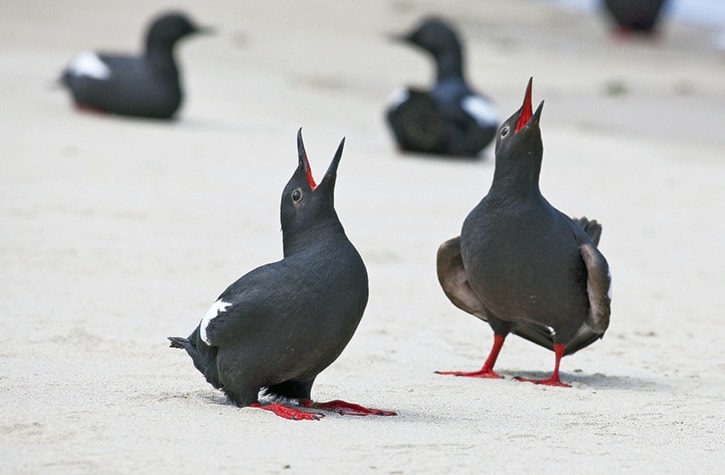The chilly easterlies that sweep down the mountains on the mainland and hit us here ‘flow down like water’ according to a pilot friend Pete in Sandspit. And they do. Unlike southeasterly gales that stop and start, gust and rest, these winds don’t stop until, presumably, another stronger system comes in from the opposite direction and knocks them down.
The downslope, icy winds are called Katabatic winds (from the Greek katabaino, to go down) which is the generic term for winds that flow down to valleys from the high elevations of mountains, plateaus, and hills. They are stopped by Anabatic winds, which are warmer and go upslope. We first heard of these winds from Captain Lew Glentworth, a retired Master with BC Ferries. He was a mine of information and always willing to share. So we have a blast of Katabatic sweeping across the ocean to our back door and let’s hope it eases up soon.
Haida Gwaii lives in the middle of all these tempestuous earthly wonders and so do birds. They get all caught up in the winds that blow and look for sheltered places. Offshore, it’s usually from Skidegate Inlet to Lawn Point north and, true to form, that was where most of the birds were on our recent trip to the mainland. Bright white dots in the water became Long-tailed Ducks, Common Murres, Western Grebes and loons, mostly Pacific. They know where they should be.
In the days before satellite forecasting, humans read bird signals and acted accordingly. Batten down the hatches, put the chickens in the coop. They have always been our messengers, and they are still. No juncos at the feeder this year? Why should they stay around for the long cold spells that started in late October. Go south young birds, and south they go.
Small flocks of siskins are showing up now, late in the season. They too are driven down by the cold winds further north and seem to have kept right on going. We stepped from the house recently and heard what sounded like a heavy wind in the willows, but there was no wind and no trees. It was a cloud of siskins, noisy and cheery and on their way to the sun.
The Pigeon Guillemots have returned to their nesting place down on by the fuel dock. According to Cecil they came back on Jan. 24 this year. Birds, as we know, hate change. They are creatures of habit and come back to the same places year after year. Had a successful nesting season last year? Why, back they come again this year. Same place, around the same time. There is a modicum of shelter where they are and they are happy.
Out in Delkatla Wildlife Sanctuary, one lone Bufflehead rides the wavelets sweeping from the east. The dabbling ducks such as teal, wigeon and mallard have gone to sheltered quarters, probably up to the small creeks beside the remaining forest buffer.
We just had a call, this minute, from a zoo in Buenos Aires that wanted to transfer two female bison to our wildlife sanctuary! We had to tell them we only do birds, although bison would be nice. But how did he know I’d just read Buffalo Dreams last night?
hecatebird@gmail.com
